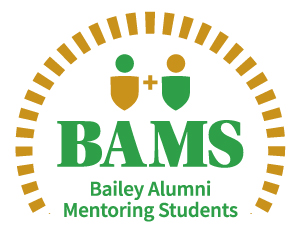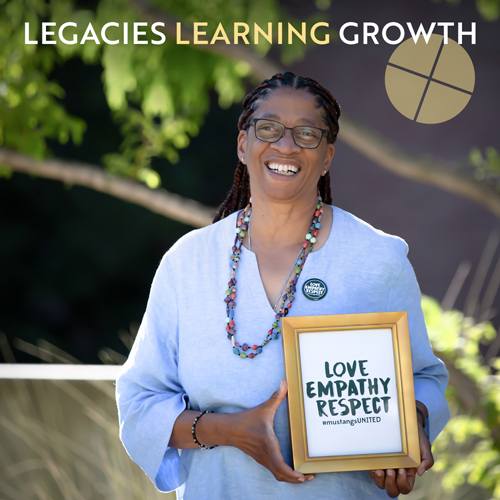Bringing Cal Poly STEM Mentorship into the Elementary School Classroom: Learning with ‘Voice and Choice’

By Nick Wilson and Angelina Benyamin Rodriguez
As part of a new initiative to encourage active STEM (science, technology, engineering and math) learning, Cal Poly students are branching out into local schools to help elementary schools with lessons and workshops — including mentorship at the afterschool Maker’s Club at Santa Margarita Elementary School.
Through a pilot program supported by the U.S. Department of Defense-funded SciTrek initiative and Cal Poly’s Center for Engineering, Science and Mathematics Education (CESAME), Cal Poly students are connecting with children at Santa Margarita Elementary and Fairgrove Elementary in Grover Beach this year to help with instruction and hands-on projects that teach students STEM skills through active participation and engaged learning.
To create the “The Perfect Maker’s Toolbox” afterschool project, 20 Santa Margarita Maker’s Club students who gather weekly for an hour after school, recently designed their creations for storing school supplies based on the wishes of a workshop partner.
They drew their concepts, input models into the computer and brought them to life with the Glowforge laser cutter operated by adult supervisors.
Materials included cardboard of different thicknesses, hot glue, paper, thin wood, and different coloring tools such as markers and pencils to decorate the toolkits. Then they presented their classmate with their finished work.
“I can tell the kids are happy to have their brains stimulated after school as opposed to the traditional free-for-all afterschool care that is less structured and educational,” said Erika Rohlfes, a first-year Liberal Studies major involved with the program. “The children are given an outlet to express their creativity in the science world, and they always end up putting their own spin on a designed product like when they drew pictures on each other’s toolboxes or shaped toolboxes, like their favorite animal.”
Santa Margarita children also are learning about biomimicry (design that imitates biological entities and processes). One of their projects earlier this school year involved brightly colored art decorations that mimic flowers to encourage bees to pollinate the school garden.
“Introducing STEM to elementary students is so important to close the achievement and gender gaps in the STEM fields and getting role models in front of little kids growing up,” said Caleb (Witt) Unruh, a Maker’s Club mentor who graduated from Cal Poly in December with a biological sciences degree. “They can start seeing themselves as a scientist or an engineer.”
SciTrek was established to help encourage interest in STEM at the K-12 educational levels (the program also has an existing partnership with UC Santa Barbara). Because standardized testing in schools is concentrated on English and math, science can fall behind given teaching priorities, program participants say.
In alignment with the Next Generation Science Standards, Cal Poly students help kids develop and test ideas both during the school day, embedding themselves in class, and then apply similar concepts in the Maker’s Club workshop sessions.
Unruh and Rohlfes have been serving alongside Cal Poly student Cecilia Dunbar, a first-year child development major to guide the young students.
“As science becomes less prioritized within the modern elementary classroom world due to the lack of standardized science testing, the science children receive is few and far between,” Rohlfes said. “The program allows the children’s agency to develop what they want to focus on with their science education, which is a rare entity to find in the school setting.”
Coordinators say that a goal is to strengthen confidence in children in STEM, especially in female students, by starting science education at an early age and providing mentorship; women are underrepresented in many STEM sectors.
“If we create better pathways into STEM for girls, we elevate and raise everybody,” said Kurt Holland, a STEM mentor working with the programs. “We have to create STEM pathways to enhance the number of girls who become powerful women.”
Santa Margarita Elementary’s Maker’s Club coordinator Brook Black said that the presence of Cal Poly students helps “makes science seem desirable.” Cal Poly students also bring knowledge of science that not all elementary teachers may have.
Black asks her young students to think about who will use their designs “to build empathy and be more understanding to others.” The children use a human-centered design model which considers how real people would use these projects.
“In this program, the children are going to buy into what they’re learning,” Black said. “And they’re going to be making decisions about what’s true and what’s not true instead of just reading from textbook information. They’re very engaged in the projects.”
Black’s Maker’s Club classroom is well-equipped with furniture, tables, shelving and the laser printer to engrave and cut cardboard, acrylic and wood for creative projects, all funded by Santa Margarita Elementary’s Parent Teacher Association.
Black has been part of the Central Coast Science Project in partnership with Cal Poly, helping teachers develop innovative science learning projects. She has led programs on maker’s projects at her school over the past two-and-a-half years; the Cal Poly students joined the ongoing program this winter and the inspiration has been contagious.
CESAME broadly is committed to maker’s spaces is because “the idea of design challenges hits so many learning priorities, including student choice,” Holland said.
“So instead of the teacher saying you’re going to do this, in this way, to be done by that time, which is boring, now children are engaged and connected to the application of learning because they have voice and choice,” Holland said.




